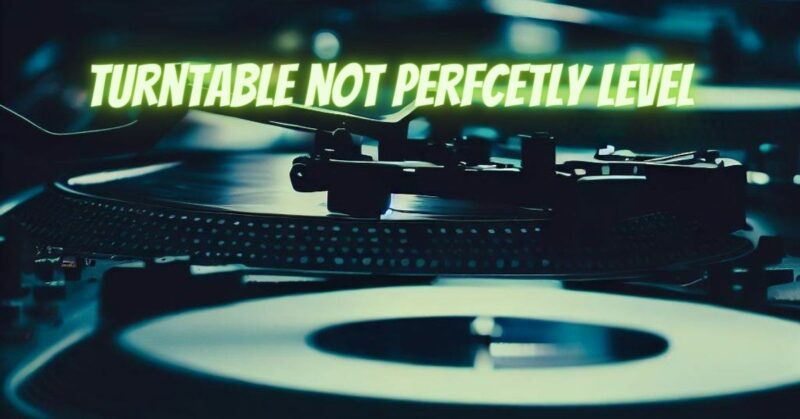Vinyl records have a unique charm, offering a warm and nostalgic audio experience. To fully appreciate the quality of vinyl audio, it’s essential to ensure that your turntable is correctly set up, including its leveling. In this article, we’ll explore the significance of having a level turntable, the potential issues caused by an uneven surface, and steps to achieve optimal playback.
Why a Level Turntable Matters
- Tracking and Stylus Wear: An uneven turntable can cause the tonearm and stylus to apply uneven pressure on the vinyl’s grooves. This uneven tracking can accelerate stylus wear and potentially damage your precious records.
- Sound Quality: Proper tracking is crucial for achieving the best sound quality. A level turntable ensures that the stylus accurately follows the groove, resulting in clear and distortion-free playback.
- Anti-Skate and Cartridge Alignment: Many turntables feature anti-skate mechanisms and cartridge alignment settings. These adjustments rely on a level surface to function correctly. An unlevel turntable can render these adjustments ineffective.
- Stability: Stability is essential for preventing vibrations and resonance that can degrade sound quality. A level turntable minimizes the risk of unwanted vibrations that can introduce noise and affect playback.
Potential Issues with an Uneven Turntable
- Skipped Grooves: An uneven turntable can lead to skipped grooves, causing the stylus to jump and skip sections of the music. This disrupts the listening experience and can harm both the stylus and the record.
- Excessive Wear: Uneven tracking can result in uneven stylus wear, which can prematurely damage both the stylus and the vinyl. This is particularly problematic for valuable and irreplaceable records.
- Sound Distortion: An uneven turntable can introduce sound distortion, affecting the audio quality. Distorted playback can be frustrating and diminish the enjoyment of vinyl records.
Steps to Achieve a Level Turntable
- Check Your Setup: Start by assessing your turntable’s current setup. Ensure it is placed on a stable and level surface. If necessary, use a level to confirm the surface’s flatness.
- Adjust Turntable Feet: Most turntables have adjustable feet to fine-tune their leveling. Carefully adjust the feet until the turntable’s platter is level. Use a level tool for precise adjustments.
- Use a Turntable Mat: Placing a proper turntable mat under your records can help absorb minor surface imperfections and ensure a smoother playback experience.
- Balance the Tonearm: Ensure that the tonearm is correctly balanced and that the stylus is tracking at the correct pressure. Consult your turntable’s manual for guidance on tonearm balancing.
- Regular Maintenance: Periodically check and maintain your turntable’s leveling to ensure it remains flat. Over time, vibrations or adjustments may affect the balance.
A level turntable is essential for achieving optimal vinyl playback quality. Uneven surfaces can lead to issues such as skipped grooves, stylus wear, and sound distortion, compromising the vinyl experience. By carefully setting up and maintaining your turntable’s leveling, you can enjoy your vinyl collection to the fullest, preserving the audio quality and longevity of your records.


